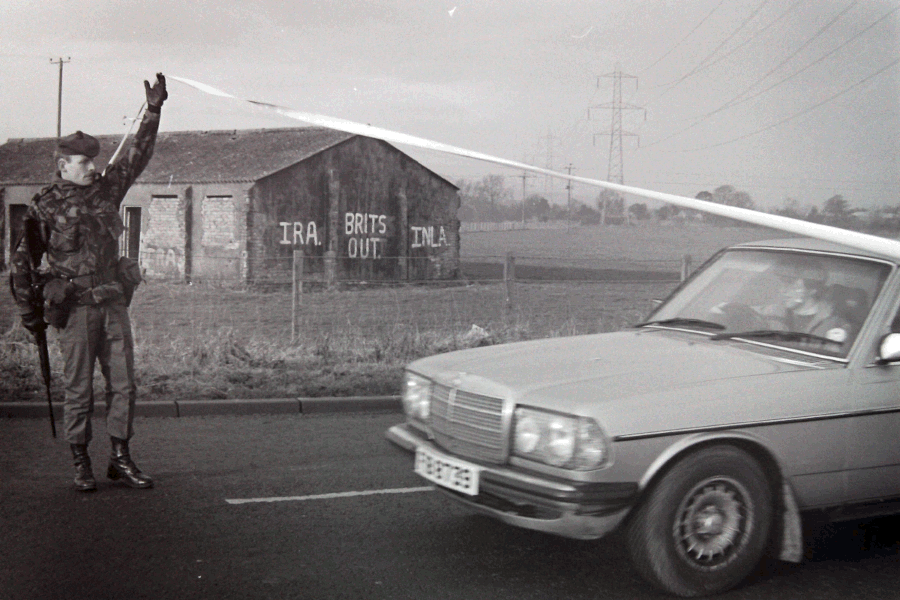
The scene close to where Francis Bradley was shot dead in Co Derry in 1986
A former British soldier present when a Co Derry man was killed by the SAS has told an inquest he has “no recollection” of the shooting.
The soldier was giving evidence at the inquest into the killing of Francis Bradley in February 1986.
The 20-year-old, whose name was later added to the IRA’s roll of honour, was shot dead close to a weapons dump during a British army ambush near Toome in February 1986.
An inquest, which opened in Derry last April, heard how Mr Bradley had told of being threatened by police before he was killed.
At an inquest hearing in Coleraine on Tuesday, coroner Peter Irvine heard evidence from a former squaddie known as Soldier E, who has been granted anonymity and was screened from public view.
He was described as a member of a surveillance subunit of a Special Military Unit active the night Mr Bradley was killed.
He was close to two other soldiers, Soldier A and Soldier C, who fired shots at Mr Bradley.
Soldier E was one of four ex-British soldiers who made an unsuccessful application to be screened from lawyers representing the Bradley family earlier this week.
During one exchange with Karen Quinlivan KC, who acts for the Bradley family, Soldier E confirmed he had ‘no recollection’ of the shooting, saying he was relying on an account he gave in a statement in 1986.
He agreed with Ms Quinlivan that in terms of the shooting he was “placing complete reliance” on his 1986 account.
When it was put to him that he “never saw anybody conduct themselves or move in such a way from your perspective that would justify anybody firing lives rounds” he responded that he “didn’t see anything”.
When it was later suggested to him that while he was moving alongside Soldier C, who shot Mr Bradley, he “couldn’t see what he (Soldier C) was shooting at or why he was shooting” he responded “no”.
After a brief adjournment, Ms Quinlivan introduced the contents of a four-page letter written by Soldier E’s legal team to a medical professor seeking his assistance interpreting evidence linked to the inquest.
Ms Quinlivan took the soldier through some of the contents, which contained a description of the evidence.
Reading from the letter Ms Quinlivan outlined that “it then goes on the say it is now the combined evidence of Soldier C and E that Bradley was lying on his back with a weapon by his side seeking to pick it up and fire at the soldiers”.
Addressing Soldier E, Ms Quinlivan said: “Now, I am trying to understand how that is said to be evidence coming from you given what we have gone through today.
“Are you able to explain why it is that your solicitors attributed to you evidence that Mr Bradley was lying on his back with a weapon by his side seeking to pick it up and fire at soldiers?”
“I can’t explain that mam,” Soldier E responded.
Continuing with the contents of the letter Ms Quinlivan added they “both (Soldiers E and C) believe Mr Bradley was attempting to get in a position to fire upon them”.
“That’s attributing that belief to you as well as Soldier C,” Ms Quinlivan said.
“But that’s not your evidence, isn’t that right?
Soldier E responded: “It’s not my evidence, no.”
The inquest continues.
You must be logged in to post a comment.